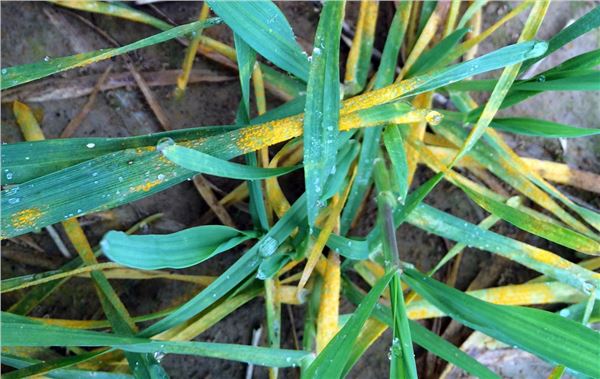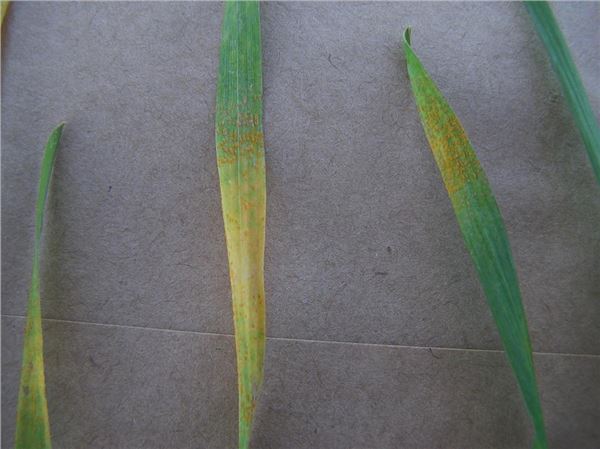Stripe Rust Update
DR. BOYD PADGETT AND DR. TREY PRICE
ALEXANDRIA AND WINNSBORO, LA.
Stripe rust development is most aggressive when temperatures are 50 to 65oF in the presence of intermittent rain or dews (6 to 8 hours). However, development can occur when temperatures are from near freezing to 70oF. Initial infections on seedling wheat may not have the characteristic striping pattern that occurs on older plants. Seedling infections often occur in ‘thumb-sized’ clusters on the leaves, frequently toward the leaf tips, as opposed to a ran-dom distribution that occurs with leaf rust. Infections may appear as linear rows of small yellow to light orange pus-tules (stripes) on the lower leaves during late winter or early spring. Striped patterns are typical of infections in old-er pants. If conditions remain favorable for development, pustules may cover the entire upper leaf surface, as well as portions of the head. Stripe rust also tends to develop in circular areas in a field and spread outward from an initial infection site. These clumps of infected plants may be found along tree or ditch lines where dew periods are longer and appear from a distance as light yellow patches. A lifecycle (infection to reproduction) can be completed within 10 to 14 days under optimum conditions.
Stripe rust has been found in Central and Northeast Louisiana as well as in surrounding states. Incidence is low, but some fields have been treated with a fungicide. If rust is found in your field, there are several questions to con-sider before applying a fungicide. The decision to apply a fungicide should be made on a FIELD BY FIELD basis.
Some factors to consider when deciding to apply a fungicide.
• What is the disease incidence?
• Is the weather forecast favorable for stripe rust development over the next 5-7 days?
• Is the variety classified as being resistant, moderately resistant, moderately susceptible or susceptible to strip rust?
• What is the growth stage of the wheat?
• What is the general condition of the crop (health and vigor)?
The disease incidence observed in fields during early February was usually less than 1 percent. There were a very few ex-ceptions. Stripe rust is present in several varieties in the official variety test and in my fungicide test plots (some varieties are Arcadia and Progeny 117) located on the Dean Lee Research Station. Depending on the variety, the growth stages range from tillering to jointing.
Stripe rust has also been observed on the Macon Ridge Research Station in Winnsboro and in several grower fields around the state.
During late January and the first week of February, weather conditions have been favorable for stripe rust develop-ment. When assessing weather conditions, nighttime and early morning conditions usually have more impact on disease development than daytime conditions. This is due to the presence of moisture that is necessary for spore germination and disease establishment.
Fungicide applications should be considered when disease is present and active, the variety IS NOT resistant to stripe rust, and is at or close to jointing or at a later growth stage. In addition, the crop health should be good to excellent, and the weather conditions should favor the development of stripe rust over the next 5-7 days.
When making an early application, it may be necessary to apply a second application later in the season. Always follow the fungicide label when applying any pesticide. ∆
DR. BOYD PADGETT AND DR. TREY PRICE: Plant Pathologists, LSU AgCenter

Stripe rust on Arcadia at the Macon Ridge Research Station (Feb. 5, 2015)
Picture taken by Steve Harrison

Stripe rust on wheat at the Dean Lee Research and Extension Center (Feb. 6, 2015).